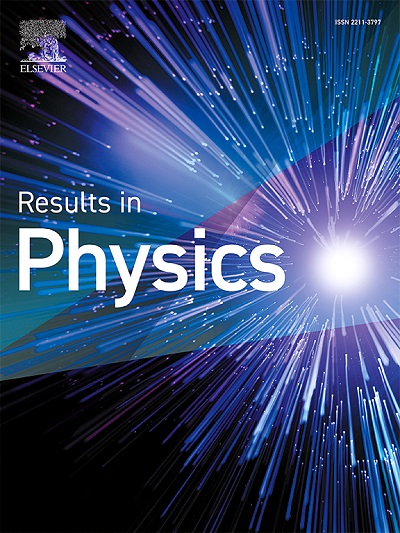Effect of Ni-doping on the electronic bandgap and thermal conductivity of calcium hydroxide: Experimental and theoretical investigation
IF 4.6
2区 物理与天体物理
Q2 MATERIALS SCIENCE, MULTIDISCIPLINARY
引用次数: 0
Abstract
In the current research work, pure and nickel-doped calcium hydroxide (Ni-doped Ca(OH)2) were studied both experimentally and theoretically. Theoretically, the material is examined by using the full-potential linearized augmented plane wave (FP-LAPW) scheme as implemented in the WIEN2K Simulation package. Experimentally, the pure and Ni-doped Ca(OH)2 were prepared via a simple inexpensive chemical method. The structural, thermal, electronic, and optical behavior of doped and pure Ca(OH)2 were analyzed. The addition of nickel increased the experimental thermal conductivity from 0.0942 to 0.2063 W/mK. The experimental band gap energy was determined to reduce from 5.21 eV to 4.04 eV for pure and Ni-doped Ca(OH)2 respectively. The Ni-doped Ca(OH)2 sample shows an increasing trend of optical properties in the visible region by incorporating Ni+2 ions. This research work shows that Ni-doped Ca(OH)2 is a favorable competitor for enhanced thermoelectric and optoelectronic applications.

ni掺杂对氢氧化钙电子带隙和热导率的影响:实验和理论研究
在目前的研究工作中,对纯氢氧化钙和掺镍氢氧化钙(ni -掺杂Ca(OH)2)进行了实验和理论研究。理论上,通过使用WIEN2K仿真包中实现的全势线性化增广平面波(FP-LAPW)方案来检查材料。实验上,采用简单、廉价的化学方法制备了纯的ni掺杂Ca(OH)2。分析了掺杂和纯Ca(OH)2的结构、热、电子和光学行为。镍的加入使实验导热系数由0.0942提高到0.2063 W/mK。实验结果表明,纯Ca(OH)2和ni掺杂Ca(OH)2的带隙能分别从5.21 eV降至4.04 eV。Ni掺杂后的Ca(OH)2样品在可见光区域的光学性能有增加的趋势。这项研究工作表明,ni掺杂Ca(OH)2是增强热电和光电子应用的有利竞争者。
本文章由计算机程序翻译,如有差异,请以英文原文为准。
求助全文
约1分钟内获得全文
求助全文
来源期刊

Results in Physics
MATERIALS SCIENCE, MULTIDISCIPLINARYPHYSIC-PHYSICS, MULTIDISCIPLINARY
CiteScore
8.70
自引率
9.40%
发文量
754
审稿时长
50 days
期刊介绍:
Results in Physics is an open access journal offering authors the opportunity to publish in all fundamental and interdisciplinary areas of physics, materials science, and applied physics. Papers of a theoretical, computational, and experimental nature are all welcome. Results in Physics accepts papers that are scientifically sound, technically correct and provide valuable new knowledge to the physics community. Topics such as three-dimensional flow and magnetohydrodynamics are not within the scope of Results in Physics.
Results in Physics welcomes three types of papers:
1. Full research papers
2. Microarticles: very short papers, no longer than two pages. They may consist of a single, but well-described piece of information, such as:
- Data and/or a plot plus a description
- Description of a new method or instrumentation
- Negative results
- Concept or design study
3. Letters to the Editor: Letters discussing a recent article published in Results in Physics are welcome. These are objective, constructive, or educational critiques of papers published in Results in Physics. Accepted letters will be sent to the author of the original paper for a response. Each letter and response is published together. Letters should be received within 8 weeks of the article''s publication. They should not exceed 750 words of text and 10 references.
 求助内容:
求助内容: 应助结果提醒方式:
应助结果提醒方式:


